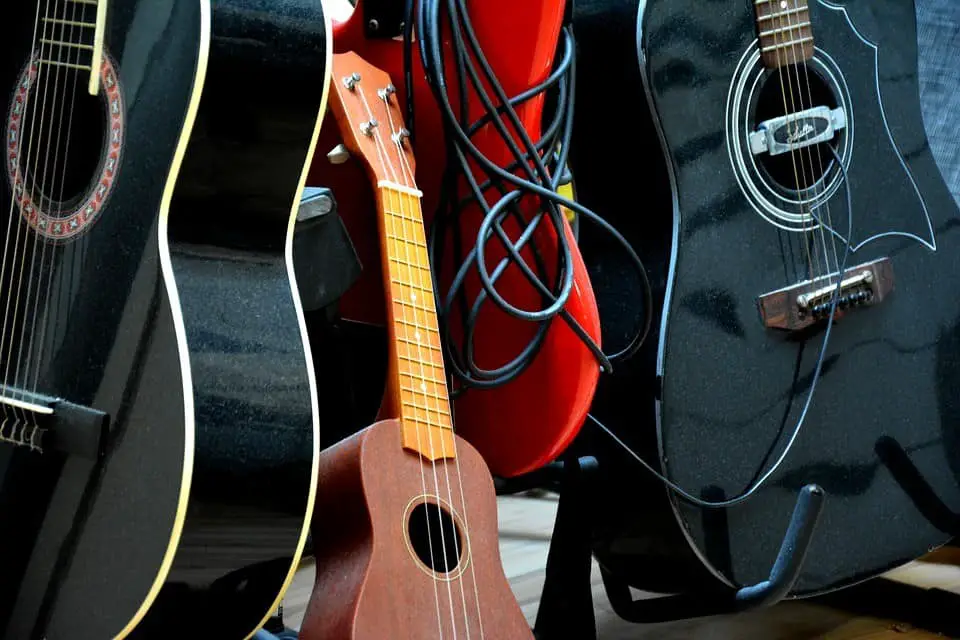7 Most Important Guitar Parts That Impact Tone
Here’s a summary table that ranks the most important guitar parts to tone. (From most important to least important)
| Rank | Guitar Part | Function | What’s the impact to tone |
| 1 | Pickup | Converts string vibrations into electricity | It takes care of the pitch of the instrument when electrical signals are given. |
| 2 | Body | Holds parts like pickup and bridge | Body allows sound to resonate. Thicker body produces deeper sound. |
| 3 | Strings | Vibrates to produce sound vibration | Thicker strings give deeper tone whereas thinner strings provide brighter tone |
| 4 | Neck | Holds the guitar string and allows fretting | Allows sound vibration to transfer and improves playing feel. |
| 5 | Bridge | Supports guitar string and allows string vibrations | Promotes stronger vibrations and more sound to reach amplifier |
| 6 | Nut | Holds strings in place and control string spacing | Denser nut allows more sound transfer |
| 7 | Headstock | Holds the head of instrument | Keeps your guitar in tune for longer |
1. Pickup
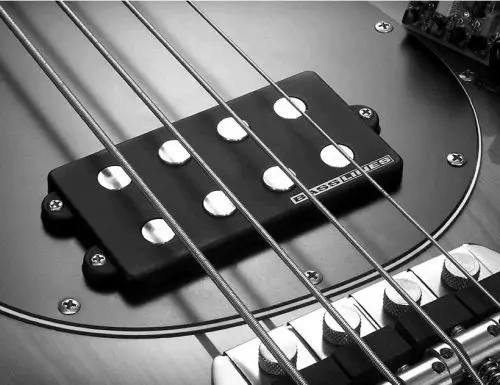
Pickup manages the sound signals on your guitar
Pickup impacts tone greatly because it’s responsible for producing sound signals from your guitar and transferring it into amp and speakers to be played. Without good quality pickups, your guitar tone will suffer.
On electric or electro-acoustic guitars, pickups are visible. Underneath the strings on the guitar’s frame, they are little rectangle blocks.
They are equipped with coils and magnets that record the sound the guitar makes and transmit it to a speaker. Acoustic bodies only have sound holes underneath the chord that change when the part is upgraded. It cost $99 on Amazon. Humbucker pickup is preferred for it as it lasts longer.
2. Body
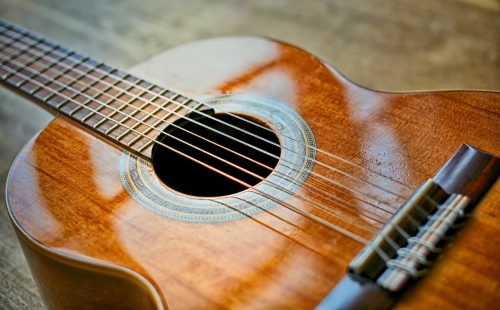
Body material has a pivotal part to play in overall functioning
The material used for guitar body impacts guitar note quite a lot because it helps the sound resonates. On acoustic guitars, thicker and winder body will provide a deeper and note with longer sustain.
Guitar body is the largest component in a guitar – which also houses the pickups and controls. Another way to see it is as the curved parts of a guitar that rest on your lap when you play.
Numerous body types exist. The sound will have more bass the bigger the body. Acoustic guitars are frequently known to have hollow bodies. Electric guitars come in hollow, semi-hollow, and solid body styles.
3. Strings
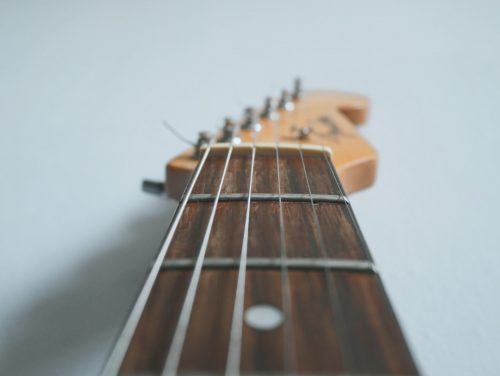
The thickness of the string can effect the tone
Guitar strings produce the sound vibration as you strum or pluck them. It affects the tone in such a way that the thicker the string, stronger the tone. Whereas thinner strings produce a brighter sound.
Additionally, there are several “Instrument Strings Types,” all of which have quite distinct sounds, so it’s a smart option to test to determine which strings work best with your particular guitar.
Also Read: Gain Vs. Distortion Vs. Overdrive: Tone Difference & Usage
4. Neck
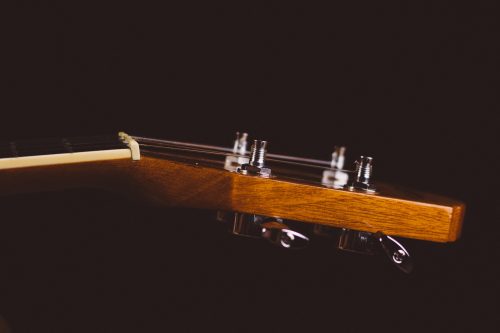
Neck can affect the vibrations
The neck impacts the tone by affecting the way that the vibrations produced by the strings behave.
It’s a long, thin piece of wood protrudes from the guitar body to form the neck. It is the area that your left hand is used to hold (or the other one for left-handed individuals). The fingerboard and truss rod are both held in place by the guitar neck. Its cost is $299 on Amazon.
The fingerboard, fretboard, headstock, and truss rod, which stabilizes the neck’s front curvature or “relief” and prevents it from breaking under the stress of the strings, are all parts of the guitar neck that protrude from the main structure of the instrument.
Necks can range in shape from a more V-shaped one to a C-shaped one and everything in between. A guitar’s neck stiffness is a good indication of the device’s strength.
Given that changing the pitch of a note by gently flexing the neck is a typical blues and rock method, some give may be useful.
5. Bridge
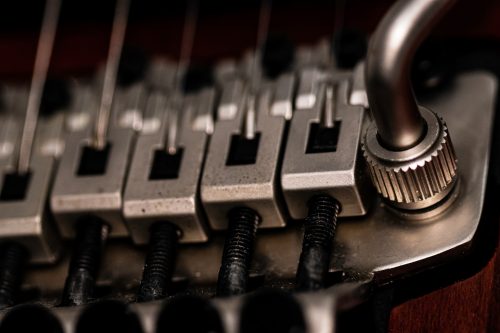
Bridge is responsible for sustaining the strings
The guitar’s body has a bridge, which is where the strings are placed as they get beyond the pickups and sound hole and onto the fingerboard. The bridge affects the tone in different ways.
It helps you to hear deep and harmonically rich vibrancy throughout the body of the guitar. The guitar’s bridge both sustains the strings and conveys the vibrations of the chords to the board.
Since they only move a little amount of air when they vibrate, strings make a very low noise on their own. Since a bridge is typically used to do this on electric guitars, the vibrations of the strands must be transferred to a bigger, resonant area.
For acoustic guitars, bridges are often composed of wood. However, they can also be built of numerous sections and other substances, such as plastics or bones. The bridge is bonded to the top of steel-string guitars and classic instruments. It costs $140 on Amazon.
6. Nut
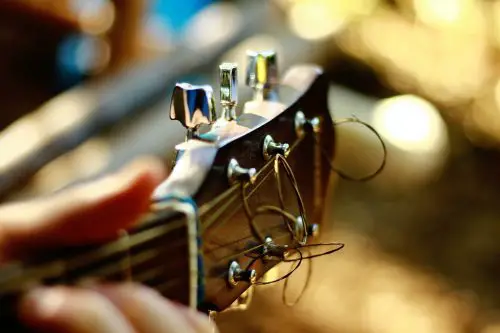
keep the nut clean for proper functioning of the guitar
The nut affects the overall tone by transferring the vibrations of the strings to the neck. The nut is a piece of material that guides guitar strings across the fretboard at the place in which the neck joins the headstock.
The guitar nut is a component that is frequently disregarded. The strings could not seat correctly if the nut is not kept up and clean. This could directly impact how your instrument sounds.
Therefore, make careful to use a soft toothbrush to carefully wipe out the grooves in which the instrument sits when you change your strings. It costs $17 on Amazon.
7. Headstock
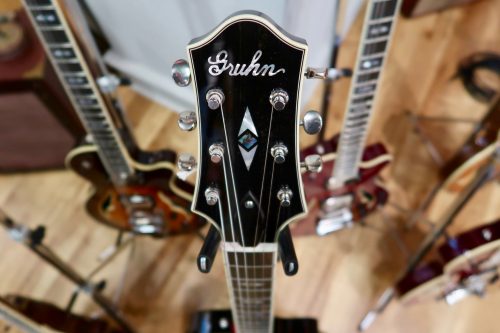
Headstocks can be flat or inclined
The headstock doesn’t affect the sound much other than the incredibly subtle differences in tone or sustain.
The guitar’s headstock, often known as the peghead, is located near the top of the neck and houses the pitching pegs and tuning keys. Based on the manufacturer and model, headstocks can be flat or inclined and have a variety of forms.


